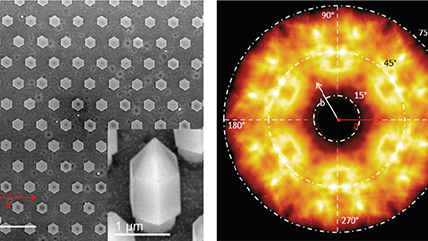A fast electron is useful in the electron microscope to probe material properties. The electron may be scattered by interaction with the sample crystal structure to produce the luminescence signal described in detail elsewhere. Additional forms of radiation may be emitted when a charged particle passes through a sample, namely transition and Cherenkov radiation. Transition radiation is a form of electromagnetic radiation emitted when a charged particle passes through inhomogeneous media, such as the sample surface and the electron microscope's vacuum. In contrast, Cherenkov radiation occurs when a charged particle passes through a homogeneous dielectric medium at a speed greater than the phase velocity of electromagnetic waves in that medium. The ability to detect and analyze these radiations using cathodoluminescence detectors allows us to investigate some fundamental properties of materials and examine our basic understanding of how light and matter interact at the nanoscale.
 |
Determining photonic band structure by energy-momentum spectroscopy in an electron microscope |